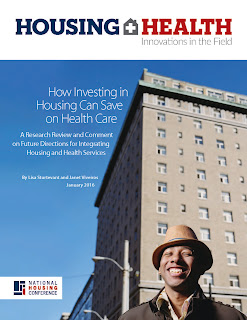For several years, I taught a program evaluation class at George Mason University’s School of Public Policy. Each time, the class session that generated the most interesting discussion was the one on cost-benefit analysis, specifically on how to measure benefits associated with health and well-being. My friend Kelly Maguire is an economist at the EPA, and she would come into class to talk about the agency’s approach to measuring the potential benefits associated with proposed environmental regulations. The students hotly debated the EPA’s value for a “statistical life” ($7.4 million in 2006 dollars) and how to value potential health benefits or reduced risk of bodily harm that might result because of a new regulation.
Putting a dollar value on good health is a tricky business. We have an abundance of evidence on the association between safe, stable and affordable housing and good health outcomes. But housing researchers tend to avoid monetizing those health benefits. There are good reasons for this. It can be really difficult to establish definitively that receipt of housing assistance causes improvements in health. Even if it does, the benefits might be a long time coming and it can be hard to measure health changes. And some housing advocates balk at putting a dollar value on the benefits of housing, arguing that housing is a right and the economic benefits need not be part of the discussion.
Janet Viveiros and I recently completed a review of the research evaluating the cost effectiveness of housing programs by monetizing the health care savings that result when people are stably housed. We found a number of rigorous studies that have demonstrated the health care cost savings associated with providing permanent supportive housing to homeless individuals. But for other housing interventions, there appears to be no good research that has attempted to value what we could save on public health care spending if we invested in programs like Housing Choice Vouchers or the Rental Assistance Demonstration.
There is a lot of potential for quantifying health benefits and comparing health care cost savings to the costs of housing programs. Even as we realize that a cost-benefit analysis should not be the sole driver of housing policy, it can be a useful part of the discussion. Environmental science researchers have developed methodologies for assigning values to health improvements and perhaps housing and community development researchers can use some of those approaches to make an economic case for investing in housing to save money on health care.


